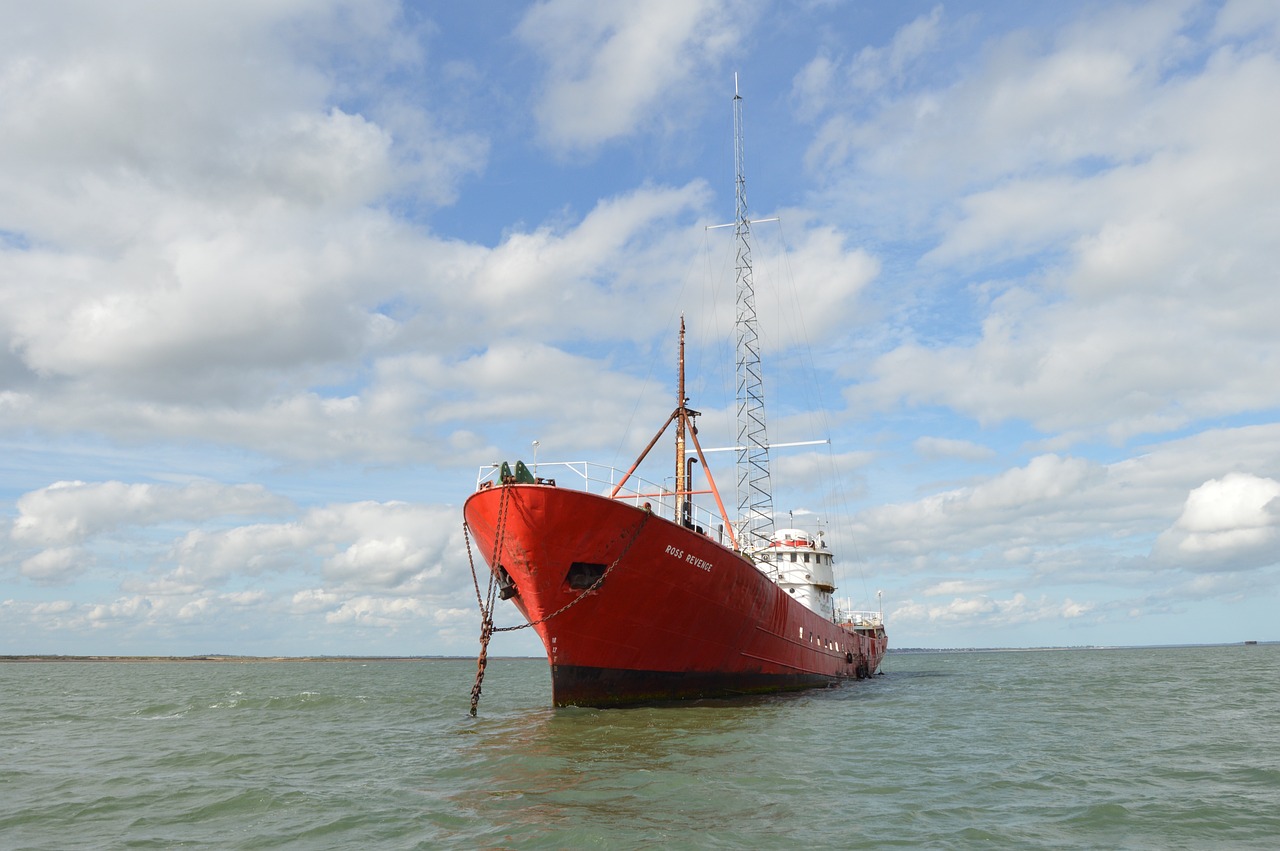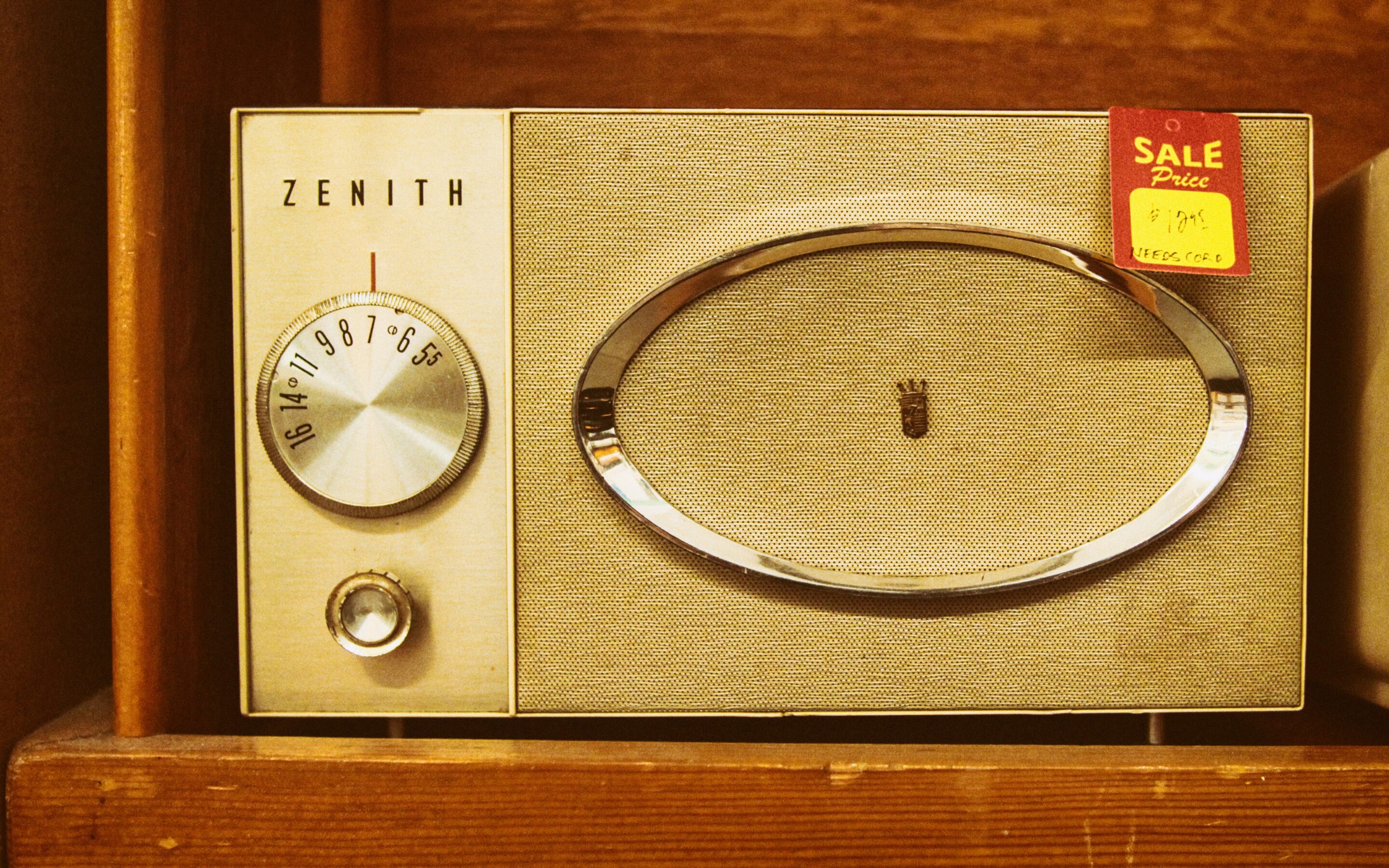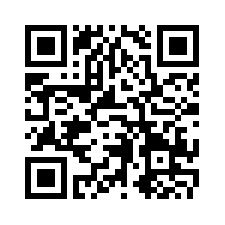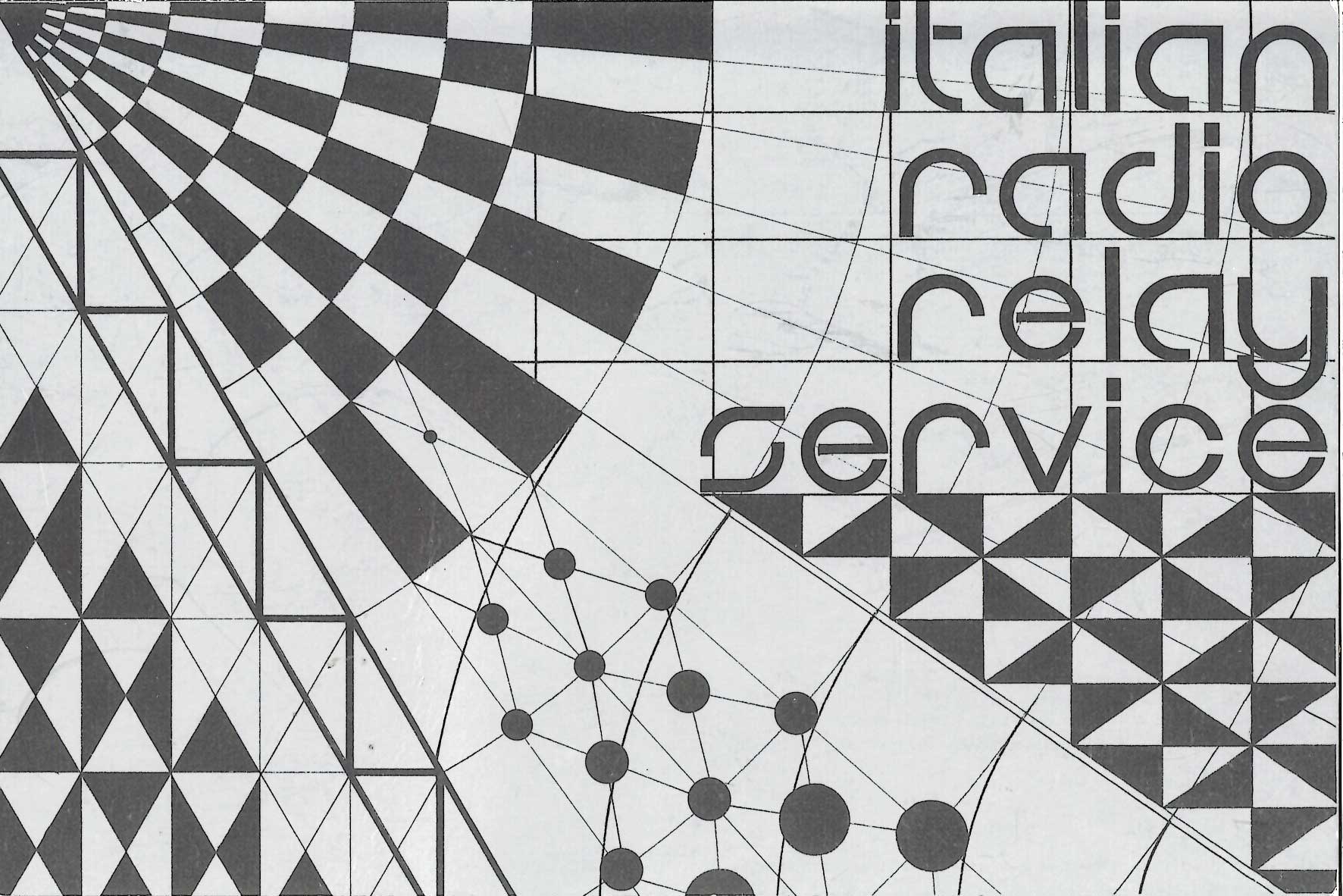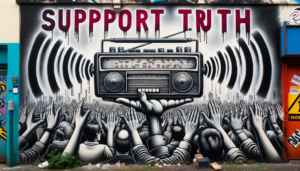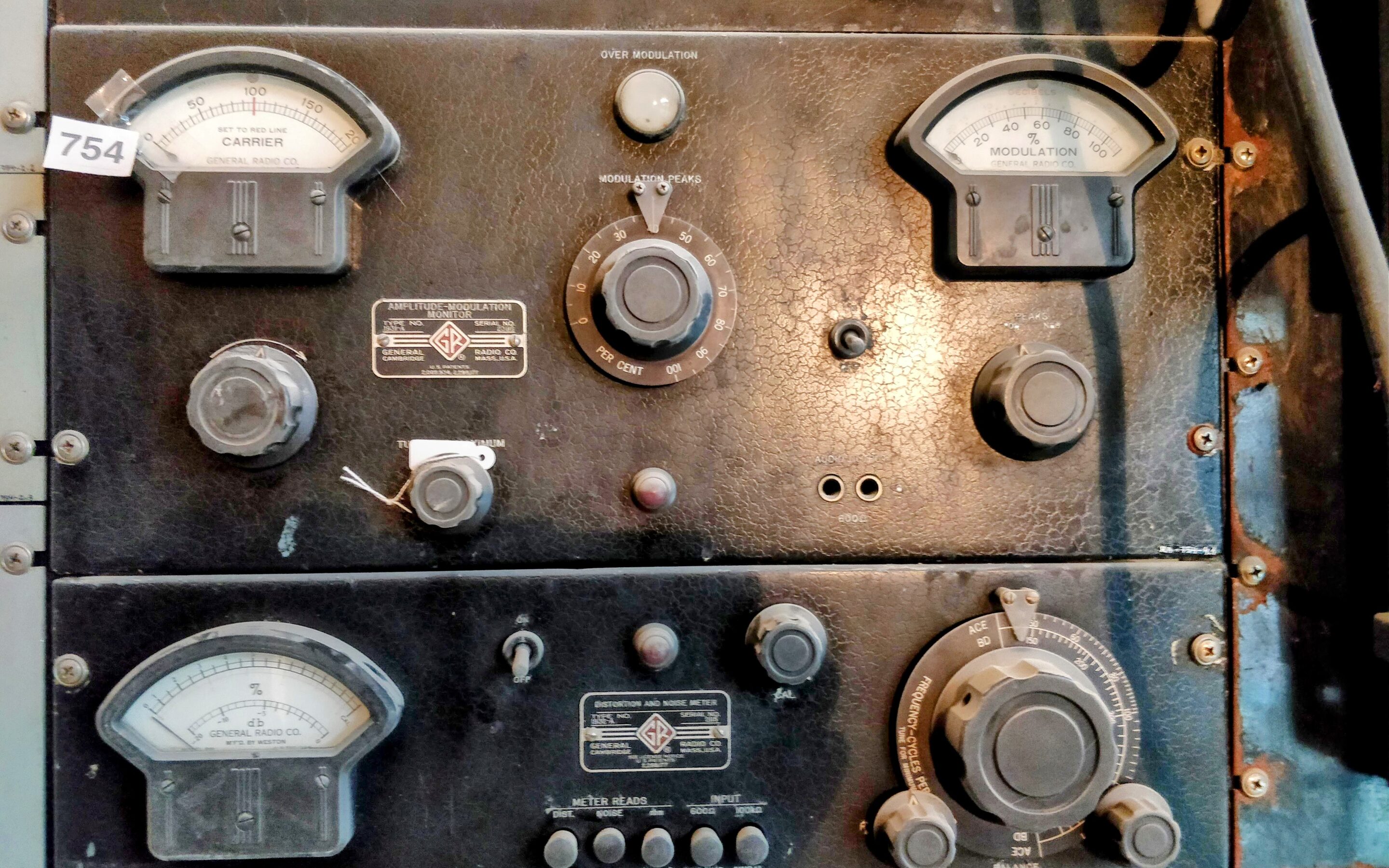
Maximizing Reach and Clarity in Shortwave and long-distance Medium Wave (AM) Broadcasting
The Strategic Advantage of European-based Shortwave Stations
The evolution from traditional tube-based shortwave transmitters to modern systems with Carrier Controlled Modulation represents a significant leap in broadcasting technology. While the old tube transmitters laid the groundwork for global communication, modern advancements have greatly enhanced the efficiency, clarity, and reach of broadcasts. Technologies like CCM modulation, directional curtain array antennnas and modern digitally controlled transmitters are pivotal in today’s communication landscape, ensuring that broadcasters can deliver high-quality audio content across the digital divide and to interested targets more reliably and efficiently, especially across vast distances. This slow shift in technolgoy not only preserves the integrity of the transmitted message but also optimizes the use of energy and bandwidth, setting the stage for further innovations in global broadcasting, energy conservation and sustainability.
With the vast geographic spread between Europe, Africa, the Middle East, and Asia, broadcasting effectively across these regions requires strategic positioning and advanced technology. European shortwave broadcasting stations, equipped with modern technology and strategically located within the continent, offer significant advantages over outdated facilities based in the USA, some former eastern European countries (i.e.Russia), Africa and Asia.
This post explores how proximity, advanced shortwave transmitters, advanced types of modulation and optimized HF antennas contribute to more effective broadcasting.
NEXUS-IBA has been a leader in international broadcasting since 1988 and has used many of the technologies described in this article.
Technical Evolution of SW and MW Broadcasting and Modulation Limits
Tube-based shortwave transmitters from the 1950s to the 1980s are characterized by their robust and straightforward design, which utilizes vacuum tubes to amplify radio frequency signals. Unlike modern transmitters with carrier-controlled modulation (CCM) that can finely adjust the carrier signal based on the modulation needs, these older transmitters (some of them are still in use in the USA, in the former USSR countries and Africa) typically cannot modulate the carrier beyond 50-60%. This limitation arises from the physical constraints of the tubes, sometimes old, that cannot be replaced because of financial constraints, which could overheat or become inefficient if driven beyond their design capabilities.
Impact of Old Transmitters on International Broadcasting
When broadcasting across large distances, such as from North America to Europe, Asia, or Africa, the limitation in modulation depth affects the quality and clarity of the perceived audio on the receiver. In older transmitters, a higher proportion of the power is dedicated to the carrier, which carries no information, rather than the sidebands, which carry the audio content. As a result, while the signal might travel long distances, its audio quality and intelligibility can degrade significantly, suffering from greater noise and less effective use of the transmitted power.
Modern Advancements with CCM
Modern transmitters use CCM to dynamically adjust the power between the carrier and the sidebands. This technology allows more power to be directed to the sidebands when audio is present, enhancing the audio quality and efficiency of power use. The carrier’s power is reduced when less audio information needs to be transmitted, conserving energy and reducing interference, which is crucial for maintaining signal quality over the vast distances of transatlantic broadcasts.
These technological advancements mark a significant shift from the capabilities of older tube transmitters, leading to more efficient and clearer shortwave broadcasting in today’s global communication landscape.
In AM (Amplitude Modulation) broadcasting, the proportion of power allocated to the carrier wave versus the information-carrying sidebands significantly impacts both the efficiency and effectiveness of the transmission. Understanding how power is distributed across different modulation types is crucial, especially since the carrier itself carries no actual audio information.
Standard AM Modulation
In standard AM, the carrier is transmitted at full power and constitutes the majority of the transmitted power. Both sidebands (upper and lower), which contain the audio information, are also transmitted. The power in the carrier is typically twice that in the sidebands combined.
AM Transmitter Power Allocation
In standard AM (Amplitude Modulation) transmission, the allocation of transmitter power between the carrier and the sidebands is strategically set to optimize signal integrity and reach (aka perceived signal loudness at the receiver’s side).

Specifically, about 66.7% of the total power is dedicated to the carrier. This constant component does not contain informational content but is essential for maintaining the signal’s structure and reach. The remaining 33.3% of the power is divided equally between the upper and lower sidebands, which carry the actual audio or data information.
- Carrier: Approximately 66.7% of total power.
- Sidebands: Together, approximately 33.3% of total power.
This distribution ensures that the carrier is strong enough to be reliably detected by receivers, even at long distances, while providing enough power to the sidebands to transmit the intended information.
For example, if a transmitter operates at:
- 40 kW total power: About 26.7 kW to the carrier and 13.3 kW to the sidebands.
- 100 kW total power: About 66.7 kW to the carrier and 33.3 kW to the sidebands.
- 150 kW total power: About 100 kW to the carrier and 50 kW to the sidebands.
- 300 kW total power: About 200 kW to the carrier and 100 kW to the sidebands.
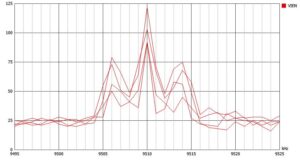
Since the carrier carries no information, the power devoted to it does not contribute to the audio loudness at the receiving end; it is effectively “lost” in terms of contributing to the intelligibility or loudness of the broadcast.
-3dB Reduced-Carrier USB (Upper-Side Band)
IRRS (the Italian Radio Relay Service) was one of the few stations that back in 1988 employed this very efficient type of modulation, initially recommended by the ITU, and later dropped by almost all broadcasting stations in favour of other types of digitally controlled modulation types, like DSB CCM (Dual Side Band, Carrier Controlled Modulation).
In this rather “unusual” type of modulation only the upper sideband is transmitted, and the carrier is reduced to about half power (-3dB implies about 50% power reduction). This significantly improves power efficiency.
-3dB Reduced-Carrier Power Allocation
- Carrier: Reduced to about 50% of what it would be in standard AM or about 33.3% of total power.
- Sideband: The upper sideband gets the remainder, increasing its proportion significantly.
In this setup, more power is allocated to the sideband, enhancing the loudness and clarity of the audio content at the receiver.
Carrier Controlled Modulation (CCM)
CCM (Carrier Controlled Modulation) or Dynamic Carrier Control (DCM) dynamically adjusts the carrier’s power level depending on the audio content. During periods of high modulation, the power to the carrier is reduced to boost the sidebands, enhancing audio content transmission.
CCM Power Allocation
- Carrier: Dynamically adjusted, often reduced significantly during periods of high audio activity.
- Sidebands: Receive increased power during these periods, enhancing audio signal strength.
Receiver Compatibility
Standard AM receivers are generally capable of demodulating all three types of transmissions:
- Standard AM: Fully compatible;
- -3dB Reduced-Carrier USB: This mode can be received with standard AM receivers, but the carrier reduction might somehow affect signal stability in fringe areas. The perceived audio is much lower compared to that of transmitters of the same nominal power output.;
- CCM: Also receivable, generally with a louder audio signal. Performance can vary based on how dynamic the carrier adjustments are.
Old vs. Modern Transmitters
Old transmitters, particularly those designed before the advent of sophisticated control circuitry, are typically unable to perform CCM or reduced-carrier transmissions. They are built to provide a constant carrier output, which while robust, is inefficient.
Disadvantages of Old Transmitters
- Inefficient Power Use: A significant amount of power is wasted in transmitting a full-strength carrier that carries no information.
- Limited Flexibility: Unable to adapt to more efficient modern modulation practices that save power and improve audio quality.
- Bandwidth Usage: Full-carrier transmissions with both sidebands use more bandwidth than necessary.
In terms of overall effectiveness and efficiency, -3dB reduced-carrier USB and CCM are superior to standard AM in modern broadcasting environments, offering better audio quality and power utilization. However, they require more sophisticated equipment both for broadcasting and receiving, which can be a limitation in certain situations.
Which modulation type is better for long-distance AM/MW and Shortwave?
In AM broadcasting, the modulation depth directly influences the power distribution and audio clarity:
- Standard AM: The carrier is at full power with equal power in the upper and lower sidebands. The modulation depth affects the sidebands; higher modulation depth means stronger sidebands but can lead to overmodulation if too high. The overall efficiency is lower because a large portion of the power is “wasted” in the carrier which carries no information.
- -3dB Reduced Carrier (USB Modulation Only): This method transmits only the upper sideband with the carrier reduced to -3dB. It enhances efficiency by focusing more power on the sideband that carries the audio, leading to better-perceived loudness and clarity at the receiver compared to standard AM, especially for distant targets.
- CCM (Carrier Controlled Modulation): The carrier’s power is dynamically adjusted based on the audio signal’s presence, maximizing power in the sidebands during audio peaks. This approach improves efficiency and potentially enhances audio quality through better use of transmitter power.
For shortwave broadcasting, especially targeting distant areas, -3dB USB and CCM are more effective than standard AM. Both prioritize sideband power where the audio information resides, improving signal clarity and reception quality over long distances.
These methods reduce power wastage and are preferable for reaching distant targets with clearer audio signals.
The use of SSB (Single Side Band) in radio communication
SSB (Single Side Band) also referred to as Suppressed Carrier modulation optimises at best the available transmitter power, by suppressing entirely the carrier and using only one of the sidebands (USB or LSB). SSB (Single Sideband) modulation, including both USB (Upper Sideband) and LSB (Lower Sideband), remains widely used today for various applications.
Its primary use is in amateur (ham) radio communications because it allows for efficient use of bandwidth and power. SSB is preferred for long-distance or weak signal communications such as HF (High Frequency) transmissions, which include maritime and aeronautical communications. Additionally, it is utilized in military communications where bandwidth efficiency and the ability to communicate over long distances with relatively low power are critical. SSB’s ability to reduce bandwidth and power consumption while maintaining communication clarity makes it ideal for these applications.
However, SSB is not suitable for commercial radio broadcasting due to its low bandwidth (offering audio bandwidth from 300 Hz to 3,400 Hz) and lower audio fidelity of the audio signal, especially with music.
The Benefits of Localized Shortwave Transmitters
Modern European broadcasting stations benefit immensely from proximity to any target audience in Europe, Africa, the Middle East and Asia. Shortwave, known for its long-distance capabilities, still performs best with reduced geographic and atmospheric obstructions. Stations located within Europe can utilize lower power to achieve the same coverage as a high-power station broadcasting to these targets from the Americas, thanks to shorter transmission paths.
This proximity to the major targets where Shortwave is still a viable communication medium to reach the digital divide, not only improves signal strength but also reduces the delay and degradation commonly associated with long-distance Shortwave broadcasting.
Technological Advancements in HF Radio Transmission
Technological advancements in HF radio and shortwave transmitters have transformed the broadcasting landscape. Modern European stations are equipped with Carrier Controlled Modulation (CCM) and can be operated using -3dB USB modulation technologies, which enhance audio quality and signal reliability. These technologies allow for dynamic power adjustment, focusing energy where it’s most effective, i.e. in the sidebands carrying actual audio information. Such innovations ensure clearer, more reliable broadcasts, particularly crucial for reaching diverse audiences across Europe, Africa, and Asia.
Strategic Use of Directional Antennas and ERP
Directional HF antennas and Effective Radiated Power (ERP) are vital in maximizing the reach and clarity of broadcasts. European stations leverage these to tailor their broadcast patterns, focusing signals towards specific regions. This strategic use of directional HF antennas enhances penetration into targeted markets by optimizing signal paths and minimizing interference. The precision in directionality ensures that broadcasts are not only stronger but also more consistent, providing stable and clear content delivery to intended audiences.
Cost Efficiency and Sustainability in Broadcasting
Operating closer to the target audience significantly reduces the costs associated with shortwave broadcasting airtime and power usage. European-based stations enjoy the benefits of lower transmitter power requirements and reduced wear and tear on equipment, contributing to longer operational lifespans and lower maintenance costs. This efficiency translates into more sustainable broadcasting practices, aligning with global initiatives for energy conservation and reduced environmental impact.
An example of Old Transmitter vs. Modern Shortwave transmitter
To explain the difference in signal levels on target when broadcasting from different types of transmitters and locations, it is important to consider several factors including the transmitter power, modulation level, efficiency of transmission, and the geographical distance to the target.
Transmitter Specifications and Modulation
Old Transmitter (100 kW) with (old) Degraded Tube
- Nominal Power: 100 kW
- Efficiency with Aged Tubes: <=80% (assuming tube degradation)
- Modulation (Standard AM with average/low audio processing): 50%
- Effective Modulated Power: 80 kW x 50% = 40 kW
Modern Transmitter (150 kW and 300 kW) with High Modulation
- Nominal Powers: 150 kW and 300 kW
- Modulation (CCM with professional audio compression): 110%
- Effective Modulated Powers:
-
- 150 kW x 110% = 165 kW
- 300 kW x 110% = 330 kW
-
In summary, by leveraging strategic location advantages, employing technological enhancements like modern modulation types, and using resources efficiently, some European shortwave stations excel in broadcasting to audiences across Europe, Africa, the Middle East, and Asia. Some shortwave stations, particularly in Eastern Europe, have significantly upgraded their broadcasting capabilities in recent years. These stations have modernized by completely rebuilding old equipment and incorporating digitally controlled Carrier Controlled Modulation (CCM) and Digital Radio Mondiale (DRM). It’s important to note that not every station exhibits the same level of modernity; there is a spectrum from older to more advanced facilities across all continents.
Donate now!
Donate to support our nonprofit mission in International Broadcasting
Donate in USD via Paypal USD donation sharable link Donate in EUR via Paypal EUR donation sharable link
Or you may also donate to in any currency via our Paypal direct donation link



